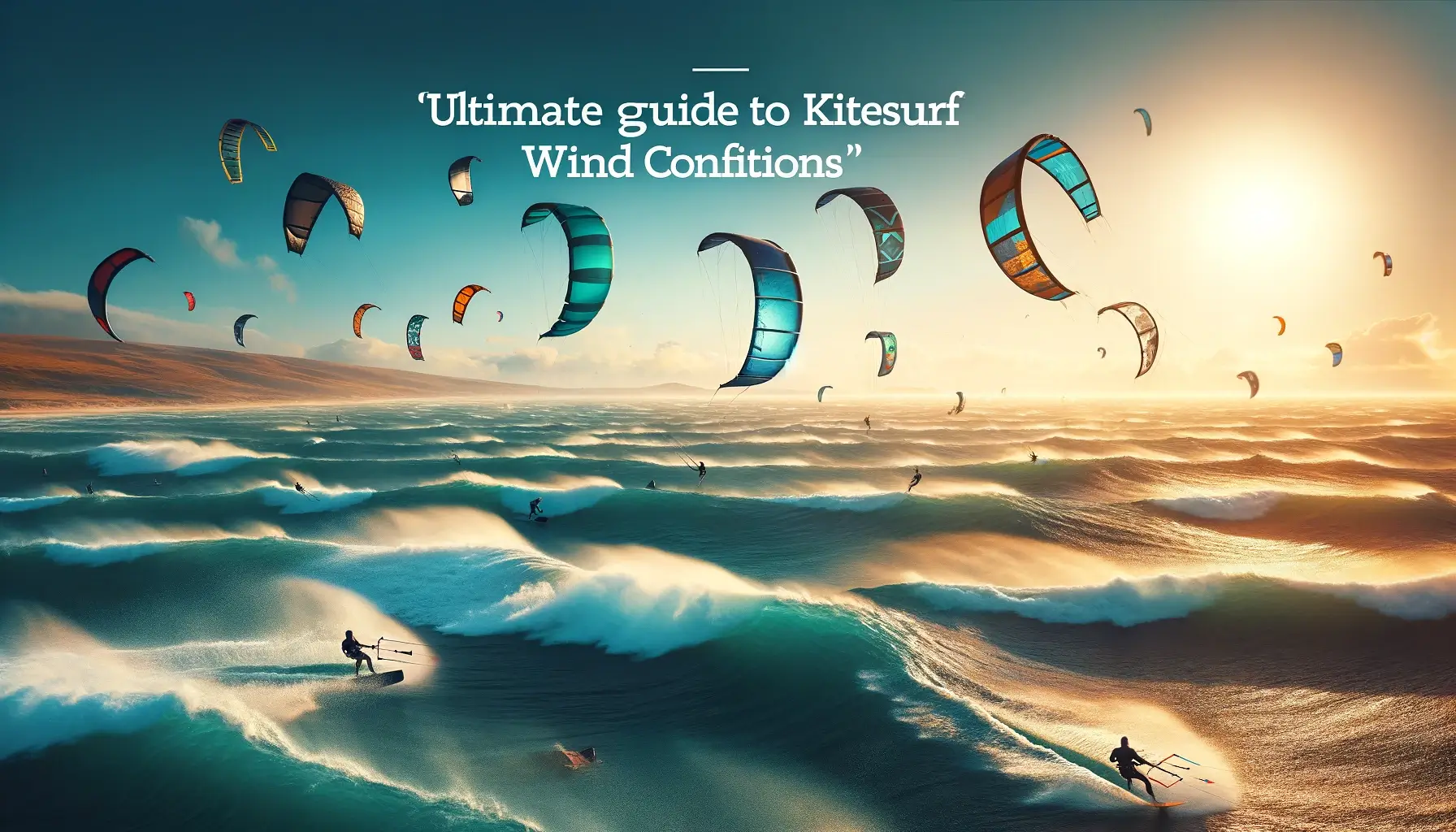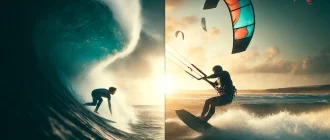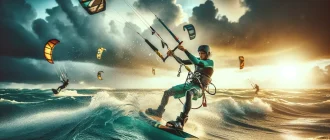Navigating the ‘kitesurf wind’ is both an art and a science. If you’re wondering what wind speeds and directions are ideal for taking to the waves or how to stay safe when conditions turn tough, you’ve come to the right place.
Our guide dives straight into the critical elements of wind that affect kitesurfing, offering actionable advice and clear explanations to optimize your time on the water.
Key Takeaways
- Ideal kitesurf wind speeds vary based on kite size, board size, skill level, and body weight. Most average riders prefer moderate breezes starting around 12 knots, while experienced riders can handle over 35 knots using smaller kites.
- Understanding wind direction impacts kitesurfing safety and efficiency, with cross-onshore winds being the most favorable. Side shore breezes provide safety benefits, but offshore winds pose significant risks and challenges.
- The selection of kites and boards should be tailored to the wind and sea conditions and the kitesurfer’s weight and skill level, emphasizing safety and the type of kitesurfing activity, such as racing or freeriding.
Gauging the Ideal Kitesurf Wind Speed
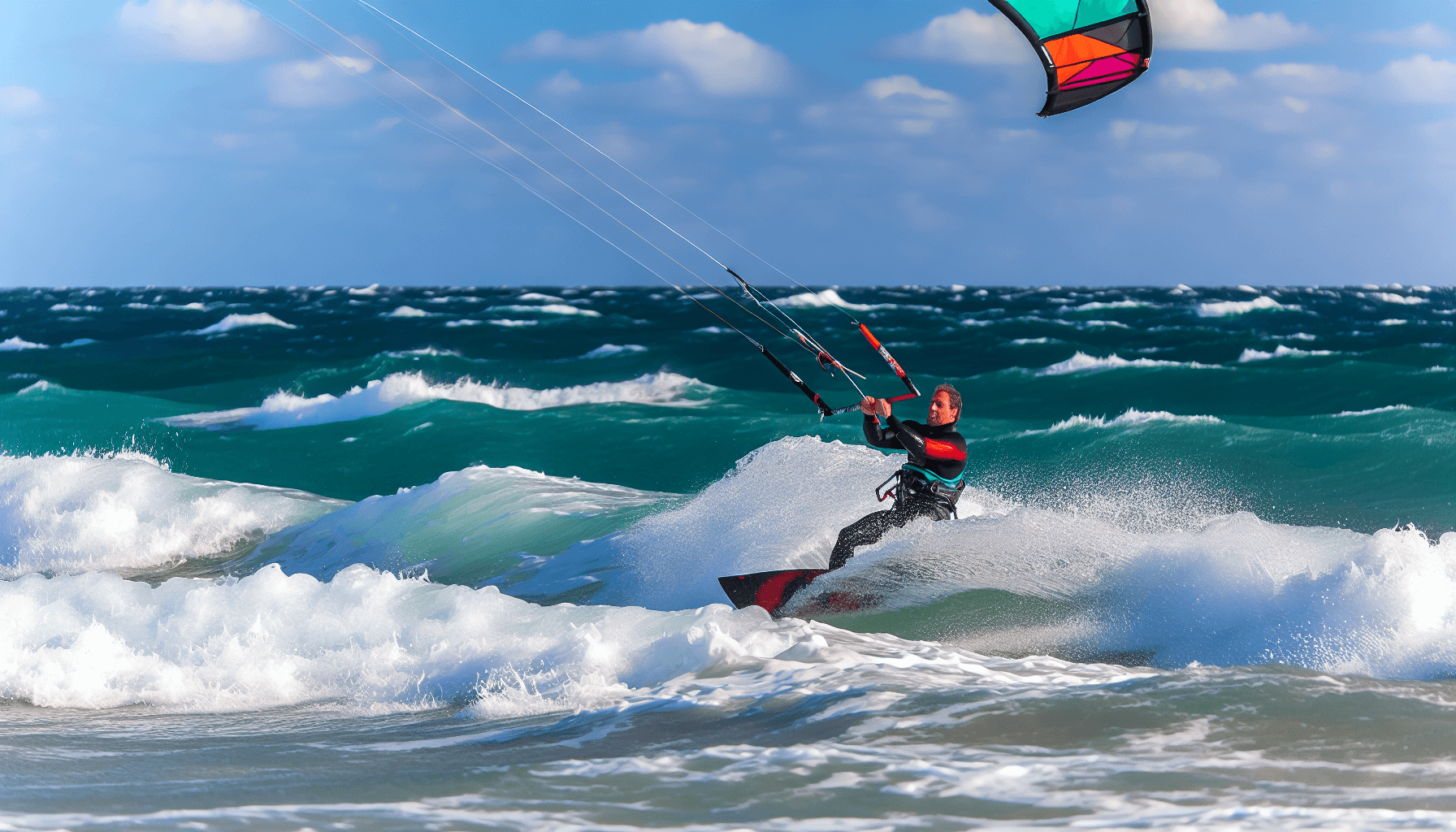
The wind, a kitesurfer’s invisible partner, essentially dictates the rhythm of the dance on the waves. The wind speed is a critical factor that influences the power generated by the kite and, consequently, the kitesurfer’s movement.
The average kiteboarder needs a wind speed of about 12 mph to start riding. However, the ideal wind speed inbound riding isn’t a uniform figure for everyone.
It varies depending on factors such as:
- the kite size
- board size
- skill level
- body weight
Experienced riders with advanced riding skills often can handle more than 35 knots using smaller kites. In contrast, using more giant kites, the average kitesurfer finds their sweet spot in a moderate breeze of at least 12 knots.
It isn’t just about how much wind there is but also how much wind there is and with how much wind, how much wind, how much wind, how much wind, how much wind, how much wind, how much wind, how best wind directions, and how the wind lulls well one can leverage it to one’s advantage.
What’s the Minimum Wind Speed for Lift-Off?
Before you hit the waters, knowing the minimum wind speed that can lift you off is essential. On average, a kitesurfer needs a wind speed of 12-20 mph to kickstart their thrilling first ride upwind again. However, wind speed isn’t a one-size-fits-all criterion. The rider’s weight significantly influences the required wind speed.
Lighter kiteboarders and lighter riders can manage a ride upwind with less than 12 mph average wind speed and perform effectively in lighter wind conditions.
On a ride upwind to the other side with onshore wind, heavier riders, especially those weighing over 200 lbs, may need approximately 15 mph wind speed to kitesurf and manage upwind riding. It’s all about finding enough wind and the right wind speed that complements your weight and skill level.
Maximum Wind Limits for Kitesurfing
Just as there’s a minimum wind speed necessary for lift-off, there’s also a maximum limit that riders should be aware of for safety reasons. As wind power increases exponentially with speed, conditions become significantly more challenging and potentially dangerous as wind speed increases.
While it might be tempting for thrill-seekers to venture into high winds, most kitesurfers prefer to play it safe and leave the water when speeds reach 40 knots due to safety concerns.
Kitesurfing conditions are considered unstable from 50 knots onwards. Riders are not recommended to go out in winds greater than 40 knots due to the high risk and little margin for error. However, many professional kiteboarders with small kites and extensive experience can handle winds over 40 mph.
Beginner and beginner kiteboarders who can push the 25-30 mph wind range as they progress and own smaller kites. However, it’s crucial to note that kitesurfing becomes challenging for beginners at around 30 knots, and it would typically be too much wind for them as it can be extreme gusty winds and difficult to control.
Decoding Wind Direction for Optimal Kitesurfing
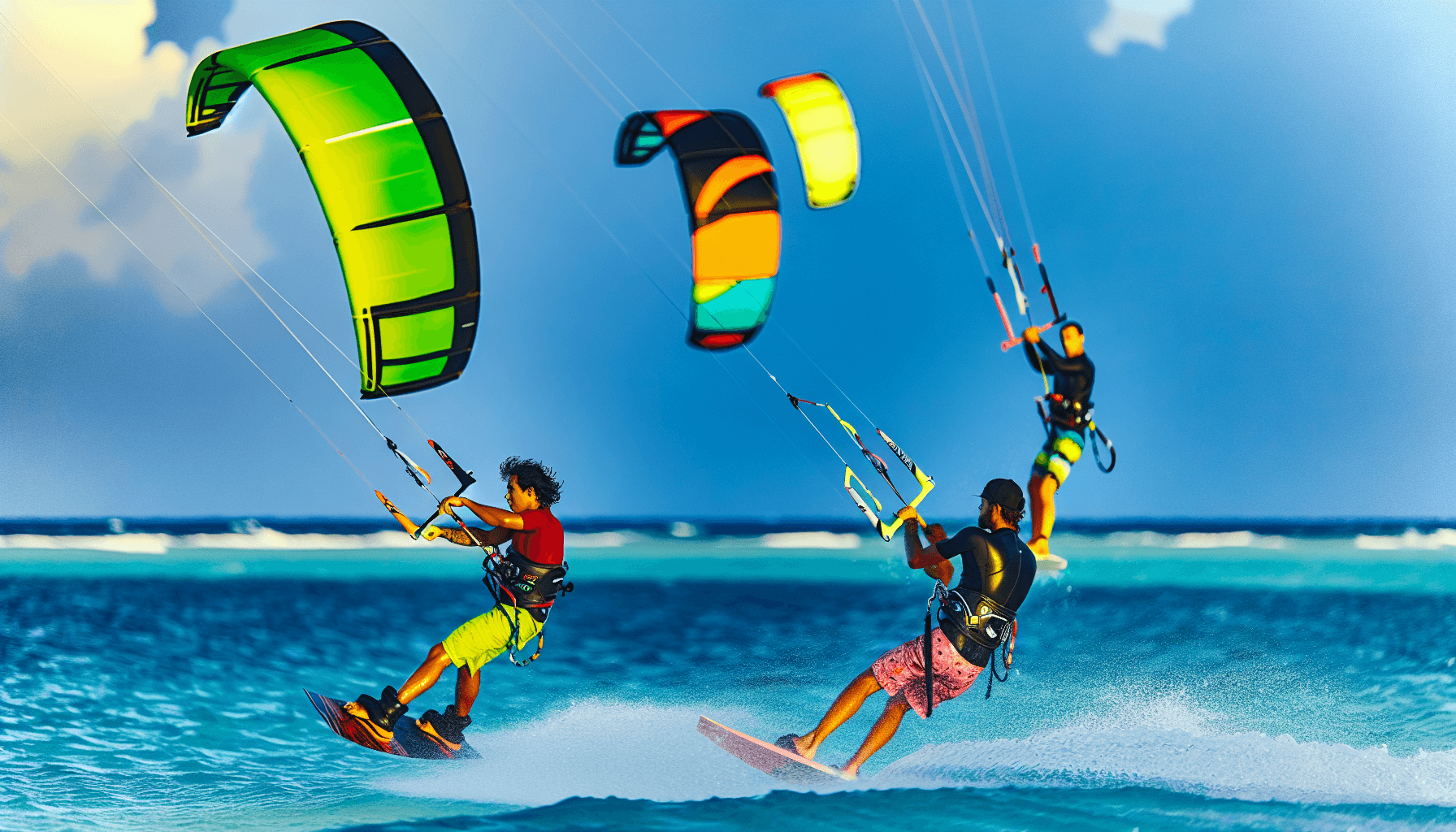
Wind and wind directions are other crucial aspects that kitesurfers must consider. It’s not enough to ride upwind and know the wind directions and how much the wind blows; it’s equally important to understand the best wind directions, your best bet for how much the wind blows, the wind direction, and your best bet for where it blows.
Wind directions The direction of the wind determines the kitesurfer’s path and influences its ability to ride upwind.
Cross-onshore side-onshore winds, with the majority of wind directions being cross-onshore winds blowing diagonally towards the shore, are considered the best wind direction for onshore beach kiteboarding, as they are the safest and most suitable wind direction.
Ideal beach kitesurfing weather conditions are found in cross-onshore wind direction, directions wind quality, and side-on-shore-onshore wind directions, facilitating an easy return to the beach. In contrast, best wind directions blowing out, cross-shore winds require careful management to avoid being pulled to sea.
Kitesurfers must beware of cross-onshore-offshore, side cross-onshore, offshore wind, side cross-shore and offshore wind, and side onshore winds, as they can push riders out to sea, posing significant risks without boat support.
Side Shore Breezes: The Kitesurfer’s Preference
Sideshore breezes are a kitesurfer’s best friend. These winds blow parallel to the land and sea, providing safe conditions at most spots.
Whether you’re a beginner mastering the basics or an experienced rider executing advanced tricks, side-shore winds are suitable for all skill levels.
One key advantage of side-shore winds is their ability to blow a kitesurfer toward the shore if they dunk their kite. This feature allows the kitesurfer to ‘sail’ back toward the beach.
Even when the wind drops and kitesurfers cannot ride race kites upwind in side-shore wind conditions, they can still ride giant race kites further upwind and return side-onshore to land. However, they may need to empty their race kites and walk upwind to the bow kites to their original starting point.
The Perils of Offshore Winds
While side-shore winds offer a smooth kitesurfing experience, offshore winds come with their own set of hazards. Offshore winds constantly push riders away from the coastline towards the open ocean, making self-rescue a significant challenge.
Due to their flow off landmasses, these winds are often powerful, gusty, and turbulent, contributing to the risk of riders being blown away from the other side of the shore in case of equipment failure or loss of control.
Kitesurfers should have boat support to mitigate the risks posed by offshore winds. Additionally, they should possess the skills for upwind riding and executing a deep water pack if they need to be rescued. It’s all about anticipating the challenges and preparing accordingly.
Onshore Gusts: Challenges and Considerations
Onshore winds, though seemingly harmless as they push kitesurf and riders toward the shore, demand caution. They create significant challenges for kitesurfers by:
- making it difficult to distance from the beach
- navigating through shore breaks
- increasing the risk of being blown back onto the beach, especially with onshore winds coming at a 90-degree angle
- making it difficult to relaunch kites if they are ditched in the water.
Onshore winds necessitate increased caution during kite launching and landing due to their tendency to push riders’ more giant kites outbound tack or toward land on the other or side onshore or the shore side of the shore.
Kitesurfers with delta kites must avoid the Zenith or noon position on the beach in onshore wind conditions to prevent delta kites from being lofted by strong gusts.
Harnessing Wind Power: Equipment Choices for Different Conditions
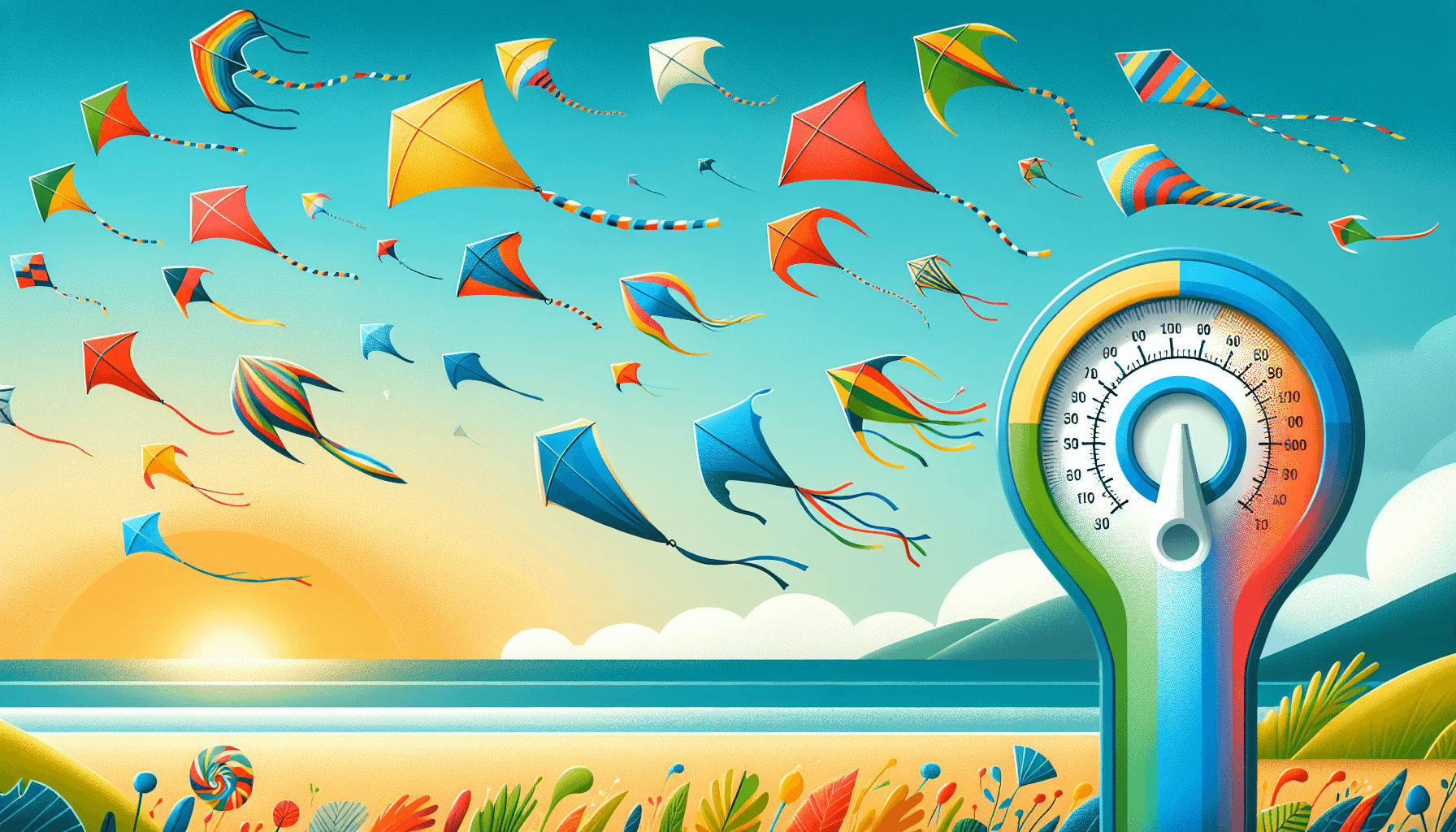
Just as a dancer selects the right shoes to match the dance floor, a kitesurfer must choose the right equipment to match the wind and sea conditions.
The kite and board size choice is influenced by several factors, including the average rider’s weight, wind-sea conditions, and skill level. Skilled riders can handle a 10-12m kite in winds as low as 17 knots and switch to smaller kites in winds of 21-25 knots as their riding skills progress.
In gusty weather conditions, riders should ride at:
- Select a kite based on the maximum expected wind speed to maintain control during stronger gusts.
- To achieve maximum speed, they send their kite into the Power Zone between 9:30 and 10 o’clock, being cautious of being overpowered by strong winds or gusts.
- Balance power and control hinges on accurately assessing wind conditions through live wind readings, such as at beaches or with an anemometer.
Kite Types for Varying Wind Ranges
Choosing the correct type of kite is crucial to harness the wind’s power effectively. There are three main types of kites to consider:
- C kites: These kites offer a direct feel that advanced riders prefer.
- Hybrid kites: These kites combine the attributes of C kites and bow kites, making them the most popular choice.
- Freeride kites are suitable for beginners thanks to their ease of relaunch and stability.
In addition to the type of kite, the power of a kite is determined by the best wind direction and by its sail area in square meters. Generally, more giant kites are used in light winds, while smaller kites are used in strong winds.
Skilled riders might use race boards and kite at under ten mph, adjusting kite sizes with experience for different wind strengths. Those who prefer foiling may choose foil wings and kites that operate in light winds.
Professional guidance is advised when selecting a kite due to variations in power and characteristics among different brands and models, affecting their safe wind range.
Board Selection for Wind and Sea States
Selecting the correct board is just as important as choosing the appropriate kite. In stronger winds, a smaller kiteboard, around 137 cm, is preferred for better control and less wind resistance.
On the other hand, a giant board, like a light wind model designed for winds under 15 knots, assists in planning earlier and offers more excellent stability for riders in lighter, less wind conditions.
A smaller twin-tip or directional board provides enhanced control and easier handling in choppy sea conditions combined with strong winds. Twin-tip boards offer versatility in various wind conditions, but selecting the correct size is essential to achieving the best performance.
A well-chosen board can significantly enhance your kitesurfing experience, providing the right balance and control.
Personal Factors Influencing Your Kitesurf Experience
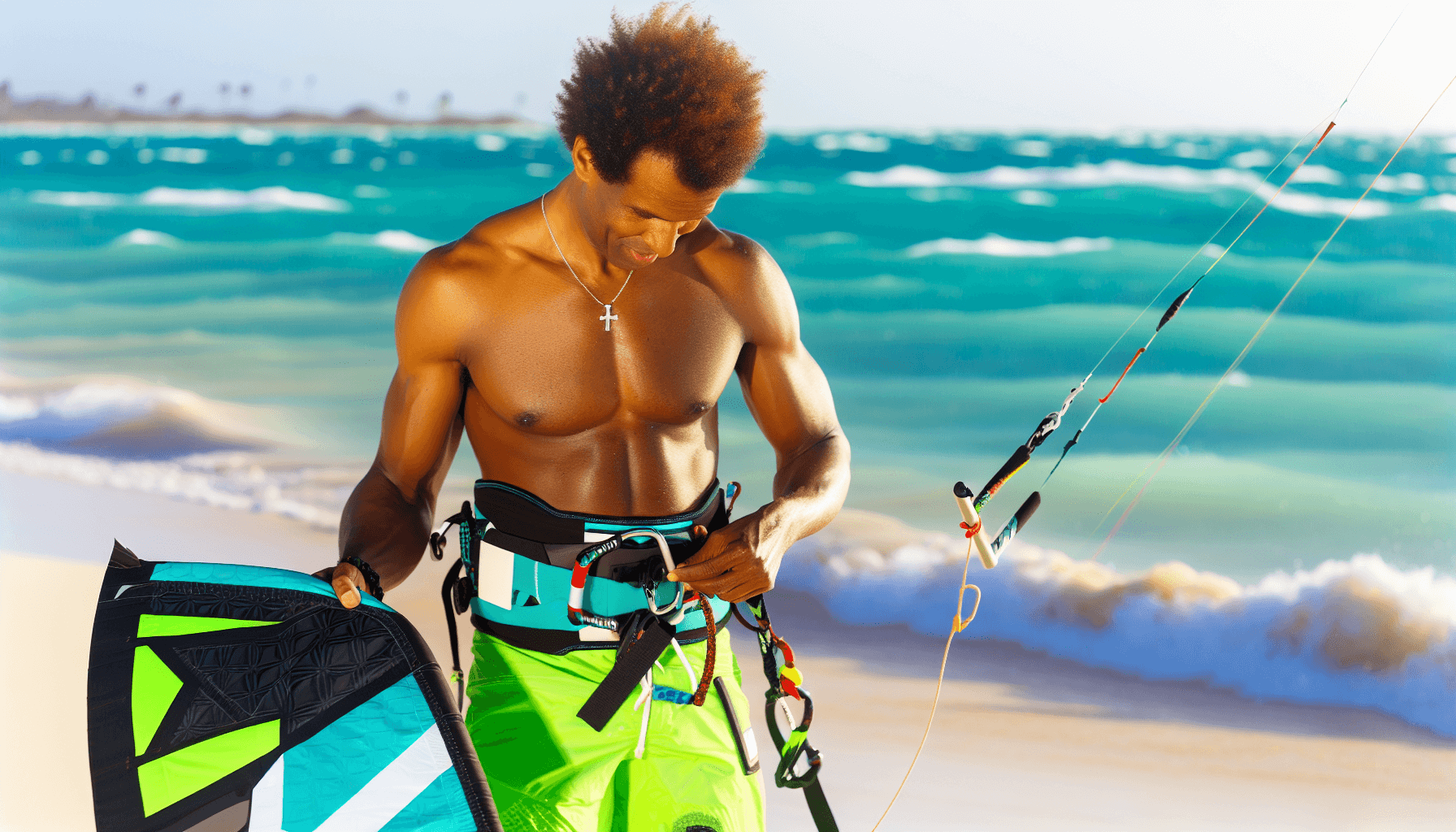
Kitesurfing is a highly personalized sport where individual factors greatly influence the experience. The skill level and the average rider weight play pivotal roles in determining the kind of winds riders can handle and the type of equipment they should choose.
Onshore winds in flat and shallow water conditions accommodate all skill levels, as beginners can walk into the flat water to begin riding against the best wind direction.
Tailoring Your Session to Your Skill Level
A kitesurfing session and weather should be tailored to match the weather conditions and the rider’s skill level. Lighter winds are steadier with fewer variations in gust strength, making a ride and weather suitable for beginners who require predictable ride and weather conditions to learn and maintain safety. Side-onshore winds are recommended for new riders because they offer safer and more manageable ride and weather conditions for learning.
Beginners should start with a kite that does not pull too firmly and a giant board to remain underpowered, which is safer and more manageable when learning kitesurfing basics.
On the other hand, experienced racers can kitesurf in wind speeds under ten mph by employing specialized equipment, demonstrating the impact of both skill and the right equipment on wind range capabilities.
Adjusting Gear for Rider Weight
Your weight plays a significant role in determining the gear you should use. Kite size should be chosen based on a combination of wind conditions and the kite’s body weight to ensure safety and enjoyment, with heavier riders typically requiring more giant kites.
Heavier riders, such as those around 90 kg, may use a 12m kite and a 155cm board in 16 to 21 knots of wind and may switch to a 137cm board as they gain experience or kite in stronger winds.
Wind speeds that are excessively high for a rider’s chosen kite size or weight can lead to dangerous overpowering of the kite, compromising the safety of the kitesurfing session. When selecting a kite size, riders must consider gusts beyond average wind speed, as variability in wind direction and strength can complicate kite control, which is particularly challenging for beginners.
Weather Forecasts: Planning Your Kitesurf Adventure
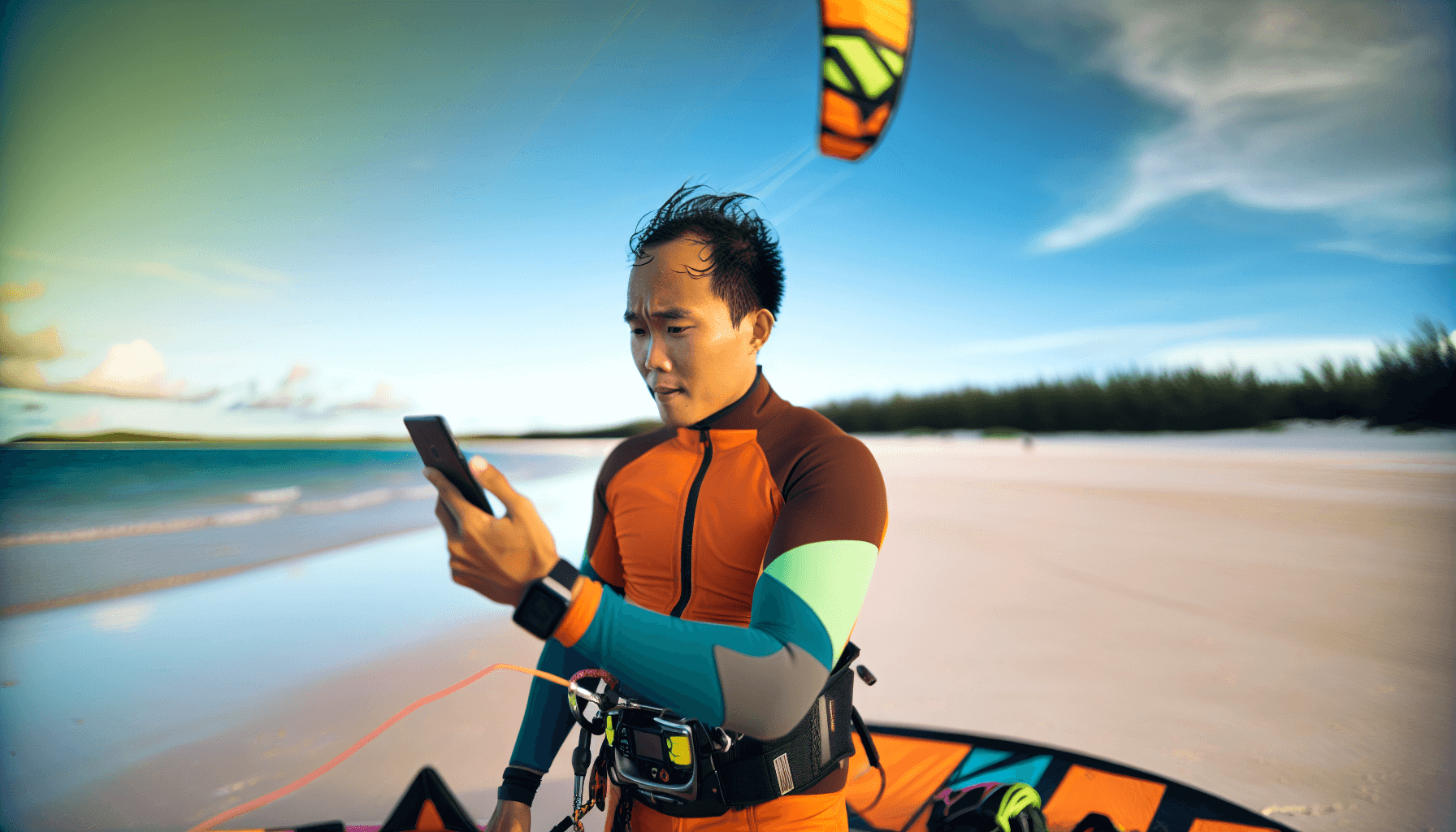
Planning is vital to any successful kitesurfing adventure, and wind forecasts are critical. Online wind forecasts provide the most accurate and frequent updates every 15 minutes, making them superior to traditional media such as newspapers, TV, and radio for kitesurfing purposes.
Websites like xcweather.co.uk and windguru.com are reliable sources for predicting wind strength and assessing the best wind direction beforehand.
The reliability of wind and wind forecasts generally extends 24-48 hours in advance, highlighting the need for kitesurfers to plan their sessions within this time frame.
Localized weather events, including rain or storms, can drastically change water temperature and wind conditions. So, consulting local forecasts, such as the Met Office in the UK, is crucial for accurate kitesurfing plans.
Interpreting Weather Conditions for Kitesurfing
Interpreting wind forecasts accurately is crucial when planning successful kitesurfing sessions rather than relying solely on raw data. Steady winds ranging from 13-18 knots are optimal for new and experienced kiteboarders, indicating the wind quality necessary for good kitesurfing conditions.
Wind rose charts, available on weather applications like the Windy app, are extremely helpful for kitesurfers to understand prevailing winds and plan their activities accordingly.
Kitesurfers should be vigilant about changing wind directions, particularly shifts toward offshore winds. They should look for signs like a decrease in wind speed before the change in wind direction occurs.
When examining wind forecasts for kitesurfing, extreme gusty winds, strong gusty wind rose top winds, and solid winds are essential to consider as indicative of potential average wind speeds, particularly during summer’s stable wind conditions.
Preparing for Sudden Changes in Wind
Weather fronts or storms can alter the wind speed and direction without warning, potentially doubling the wind strength or causing it to drop off quickly.
Before a storm arrives inbound riding, it is advisable to land the kite onshore wind or shore, if possible, as storms can cause intense, short-lived changes in wind conditions inbound riding, with the same wind direction usually stabilizing around 30 minutes later.
To mitigate the effects of gusts on the water, kitesurfers should maintain the kite at around a 45 to 60-degree angle from the water, offering more effective control over the kite’s power.
If substantial and robust gusty winds loft the kite, keeping it in a neutral overhead position and preventing it from releasing the bar could lead to losing kite control.
Offshore winds, which blow from the land toward the ocean, present significant risks, such as making self-rescue very difficult. Thus, they require extra caution and consideration of a rescue service. The potential dangers of offshore wind should not be underestimated.
Understanding the Wind Window in Kitesurfing
One of the fundamental concepts that every kitesurfer needs to grasp is the Wind Window. This is a three-dimensional space downwind of the rider, representing the area where the kite can be flown. Understanding the Wind Window is crucial for control and safety, as flying a kite outside this space may cause it to stall and fall.
The radius of the Wind Window is determined by the length of the kite’s lines, with longer lines resulting in a larger space to fly the kite.
The Wind Window contains three main zones: the Edge for low power, the Intermediate Zone for medium power, and the Power Zone for maximum control. Kitesurfers employ a clock face analogy, using 9—to 3-o’clock markers to identify kite positions in the Wind Window for communication and instruction purposes.
Suppose a kitesurfer has wind drops leaving behind their kite in the blowing cross-shore winds. In that case, they should aim to relaunch more giant kites behind it in the onshore wind on the dry land on either side of the wind drops, leaving the Wind Window to the more giant kites to be pulled outbound tack onshore wind closer to the shore.
Mastering the Basics of the Wind Window
Mastering the basics of the wind window is the first step towards achieving control over how much wind lulls the kite. The Wind Window is divided into three zones:
- The Neutral Zone: This is the Edge of the Wind Window where the kite can stay in stationary flight, producing little or no power. It is ideal for launching or landing the kite.
- The Intermediate Zone (Soft Zone): This zone lies downwind of the Neutral Zone. In this zone, the kite moves dynamically and generates gradual power, which increases as it moves closer to the next zone.
- The Power Zone: This is the area of the Wind Window where the kite generates the most power. It is located directly downwind of the Intermediate Zone.
Understanding and controlling the kite waves on land, sea, and land within these zones is essential for safe and effective beach kiteboarding.
Launching and landing the kite should occur at the Edge of the Wind Window where the kite generates the least power, typically at the 9 O’Clock or 3 O’Clock positions.
When the wind strength is good, kitesurfers fly the kite through the Intermediate Zone during normal cruising.
Advanced Techniques Within the Wind Window
As kitesurfers advance in their skills, they explore the Power Zone of the Wind Window. Apparent wind affects experienced and new riders by shifting the wind drop, leaving the Wind Window behind new riders as they gain speed.
This is essential for maintaining the ability of new riders to ride upwind effectively. Understanding the prevailing wind direction can help new riders further enhance their performance in the wind window.
The power zone of the wind window is utilized mainly in light winds or for performing advanced tricks since kites rush and cannot be easily stopped or controlled in this area.
Summarization
In conclusion, wind speed, wave action, wind direction, and personal factors such as skill level and weight significantly influence a kitesurfer’s experience.
Understanding and harnessing the power of the wind, using the correct equipment, and mastering the Wind Window are essential to ensure safety and enjoyment in kitesurfing. This guide serves as a stepping stone towards your thrilling adventure, harnessing the power of the wind to ride the waves.
Frequently Asked Questions
What is considered good wind for kitesurfing?
Good wind for kitesurfing is generally around 12mph, but lighter riders can manage with less wind, and heavier riders may need around 15mph. Modern race boards and kites can allow skilled riders to kitesurf under ten mph, but this is less common for lighter riders.
What wind speed is needed for kitesurfing knots?
For kitesurfing, a wind speed of 10 to 11 knots is needed for it to be possible, and 14 knots is generally fun for beginners, while at 30 knots, it becomes challenging for beginners.
How much wind do I need for a 12m kite?
For a 12 m kite, you will need about 12-20 mph of wind. This is the average range for comfortable kiting with enough wind for a kite in the 10-12 meter size.
Which is more challenging, windsurfing or kitesurfing?
Windsurfing is generally considered easier to learn than kitesurfing, requiring only a few hours of instruction to begin sailing independently.
How does wind direction affect kitesurfing?
Wind direction determines a kitesurfer’s path and upwind riding ability.

